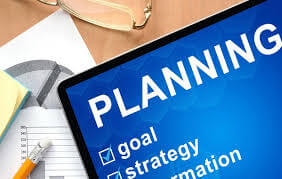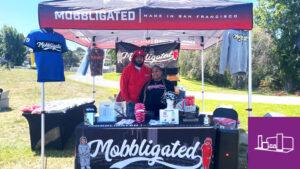Recently updated on February 14th, 2023
The answer is: No. Not really. The answer is not because trade shows are the end all be all for sales and marketing. There will always be a need for great, fresh ideas and new approaches. New markets are always finding ways to become familiar with new products and promotional methods. That does not mean you can’t still use trade shows greatly.

The problem is that most marketers and sales folks are moving so fast from one industry to another that they don’t have time to learn what the next step in the market is. If they try to do it, they lose their audience before they even get started. There is an old saying that goes something like this, “What gets measured may get missed.” That’s why so many companies and business people focus on so many things right away. You have to focus on one thing at a time if you are going to bring it to the next level.
Our trade show displays more important than any other form of promotion? Not necessarily. However, it’s no less important. Why?
First off, by not showing people what’s new, you miss an opportunity to gain a lead. That’s a good reason to keep your market up to date. It is also important to demonstrate the benefits of your product. How do you do that? By letting your customers or prospects to see how they will benefit from your offer, then asking them to make a decision.
That decision is an appointment with you. You make it when you meet them when you send out mailers or brochures when you put your Web site on their calendar. You set it up. It is up to you to make sure the people you bring into your market know what you are about and what they can get from you.
When are trade shows done into? Just before the New Year, or right after if you have had a particularly busy year. By having these events happening around important holidays – such as New Year’s Eve, Valentine’s Day, Christmas, and the Fourth of July – you establish your firm as a highly regarded provider. You make it clear that you are the place to be during these times.
Trade shows are just one part of your marketing plan. You need a whole set of other things. You have your sales tools, your advertising tools, and your direct mailers and brochures. You have special promotional items for your events like pens, pins, and T-shirts.
You also need to trade shows to remind your customers that you exist. So you might consider sending them a brochure with a business card inside. Or perhaps a free gift if they make a purchase at one of your displays during trade shows. These are just a few ideas to help you make the most of your trade shows.
It can be a fun event to attend. There are many ways to spice up an event. Use your imagination and hire a DJ to keep the crowd happy. You could hire a hypnotist to get your audience into a trance or have some company create a themed entertainment show.
But are trade shows a waste of time? After all, isn’t that why you’re hosting it? Isn’t that what marketing is all about?
Yes, and no. While a marketing tool, it can be effective. If it’s done well and fits with your current marketing strategy, you should probably use it. If it’s a last-minute addition to your marketing plan, maybe it’s not.
Are trade shows a good way to market your company? That depends. If you’re planning a big marketing initiative, then it might be worth the expense. However, if you only plan to attend a couple of them each year, it’s not worth your time or your money. Just stick to your plan and do your marketing.
How to Be Successful at Trade Shows
Displays are often the highlight of any trade show. Getting your message out to as many people as possible is a great way to increase sales and improve profits. Exhibiting at trade shows can sometimes be expensive. In order to maximize your exposure, it is crucial to do all that you can to ensure your success at the event. Whether it is your thirteenth time exhibiting at a trade show or your first time ever exhibiting, these trade show success tips can help you maximize your impact.

Use social media networks. The number of people who are on social networks and the number of people that use social media networks on a daily basis is growing exponentially. As a result, more people are able to find you via social media than ever before. If your trade show is located in an area where social networks are highly active, make sure that you take advantage of this. Use the opportunity to promote your booth location and brand by posting on your social media network pages.
Coordinate with local businesses. Trade shows are not just for business corporations. They are also for small businesses that want to increase their exposure in the marketplace. Many times when booth locations and display rentals are booked in advance, business owners are forced to either book the booth location a few days in advance of the show or spend a little more on display rentals and get in line behind other exhibitors that have the space available. Make sure to coordinate your booth location with other business owners in your niche and let them know when you will be displayed so they can plan on having the space ready when you do.
Plan ahead for events. Trade shows are just like any other type of convention-you can’t assume that your potential clients will be there. You also can’t presume that just because someone looks good online that they will be present at the trade show. If you have a tight budget and you know you won’t be able to spend much on display rentals, try to make your booth location and all of your displays as visually appealing as possible. Banners can be printed using dye sublimation which has many benefits including… no scratches
These are some of the most overlooked trade show success tips but they are worth emphasizing.
Be prepared. If you have specific knowledge about a product or service, make sure you incorporate that into your booth. Be sure to hand out samples or demo copies of your products and services and hand out promotional materials, including business cards. A well-presented booth speaks volumes about your company and your efforts will be greatly appreciated by your potential clients.
Know who your target audience is and focus on that audience. For many types of trade show displays, you can have a mix of customers. However, when it comes to a more general trade show exhibit, you have to make your message clear. Your goal is to bring in the customers who are looking for your particular type of service or product. If you have a limited number of trade show spaces, you will want to focus your marketing strategy on the audience most likely to be in attendance.
Set up your company as if you were at a convention. Keep your booth clean, be sure to provide plenty of business cards for people to use, and have your contact information displayed prominently. As with any other marketing campaign, be sure to properly spell your name. If you are still learning how to be successful at trade shows, take a seminar, or follow one of the many online strategies for trade show marketing.
Finally, don’t give up. You may have to work extra hard during a trade show but it’s worth it. If you follow these tips, you will likely find that you have fewer show attendance problems and make more sales. The more experience you gain, the better able you will be to handle events as they arise. When you are more confident about your trade show marketing, you’ll be able to plan a successful event without putting too much pressure on yourself.
Planning How To Plan For A Trade Show
So you’ve decided to attend your first trade show. Now comes the fun part: How To Plan For A Trade Show. After setting your budget, start by devising a schedule of when you think you can schedule the most productive tradeshow events. Schedule in a bit of down time, during which you can settle in and work through your marketing plan. You’ll want to stay on task so that you don’t procrastinate or get sidetracked.
Phase 2: 6 Months to a Year Later. After your first exhibition, your next one is almost next. While it’s not a good idea to repeat a successful campaign for each event (especially if the competition is stiffer), you should consider expanding your strategy for smaller trade shows and seasonal exhibitions. Attend smaller events with less competitive rivalry.
Phase 3: Two Years and Five Years Later. Once you’re comfortable with your exhibit design, marketing plan, and booth layout, it’s time to kick back and relax for a while. While it’s important to keep your eye on the prize – having a strong following – you don’t want to burn yourself out trying to do everything all at once. Give your trade show planning timeline a break and let the next tradeshow season kick off.
Step One: Create a quick checklist. The three most important aspects of your trade show planning timeline is your budget, your exhibit, and your staffing. Don’t worry if these elements aren’t exactly on your to-do list right now; keep checking them off as you implement each item on your list. The key to planning effectively is making sure that your resources are stretched as far as possible, but not at the expense of efficiency. Here are some quick strategies to help you develop an efficient trade show planning timeline:
Make sure you have a sound, full-featured budget. Your financial strategy will be significantly affected by how much work-back you choose to do between the start of your planning and the day of the trade show. Don’t leave anything to chance. Make sure you know what you want to invest, what kind of results you’re looking for, and which vendors you’ll need to hire immediately upon opening for business. A well-calculated budget can mean big savings both in terms of time and money.
Be sure to incorporate your event marketing goals. This should be a written plan that you update regularly. When you begin planning for your next event, set your goals and write them down. It will be helpful if you can break your goals down into smaller steps, such as who you will address, what you will talk about, and how long you plan to talk and engage. This will let you gauge how successful you are at planning ahead and gauging success of your plans.
Be open to change. Although it may seem difficult to think about changes, it’s a good idea to evaluate your event marketing strategy after each successful showing to see how you might be able to improve your approach. For example, if you’ve been focusing on social media advertising and creating Facebook pages that reach your target audience, perhaps you might consider doing a little more advertising on television or radio. Even if you don’t find new ways to advertise, planning ahead can help you determine what you’re going to promote and where you’ll promote it most effectively.
Finally, don’t forget your participants. All trade shows have the potential to bring in new customers and clients for your business. Trade exhibitions and fairs should be an opportunity to meet and greet all your future clients. You also need to think about your staff. If you want to make the most of your trade exhibitions and fairs this year, be sure to plan for all the attendees’ needs such as registration, hotel accommodations, transportation, meals, entertainment, etc.








